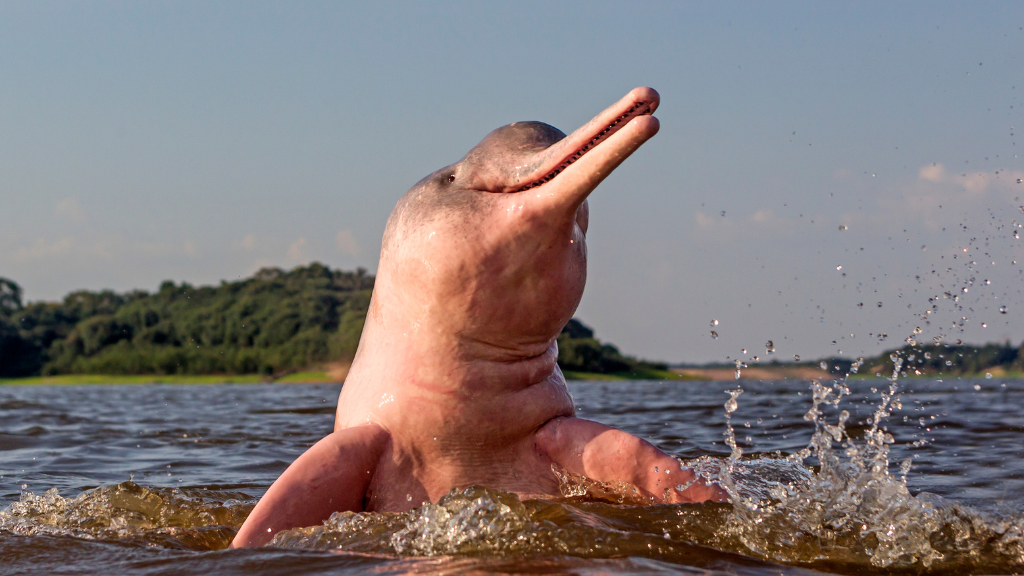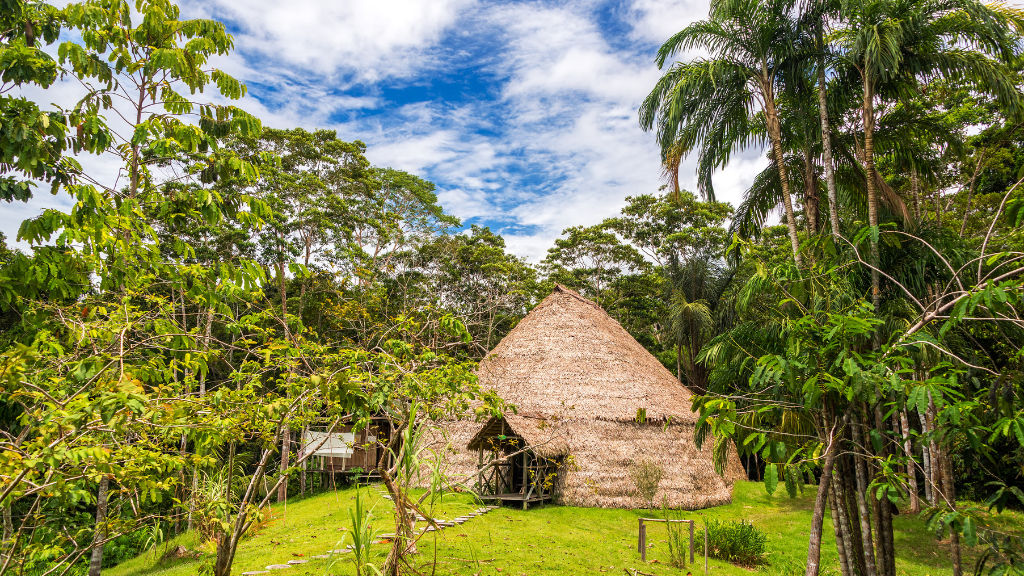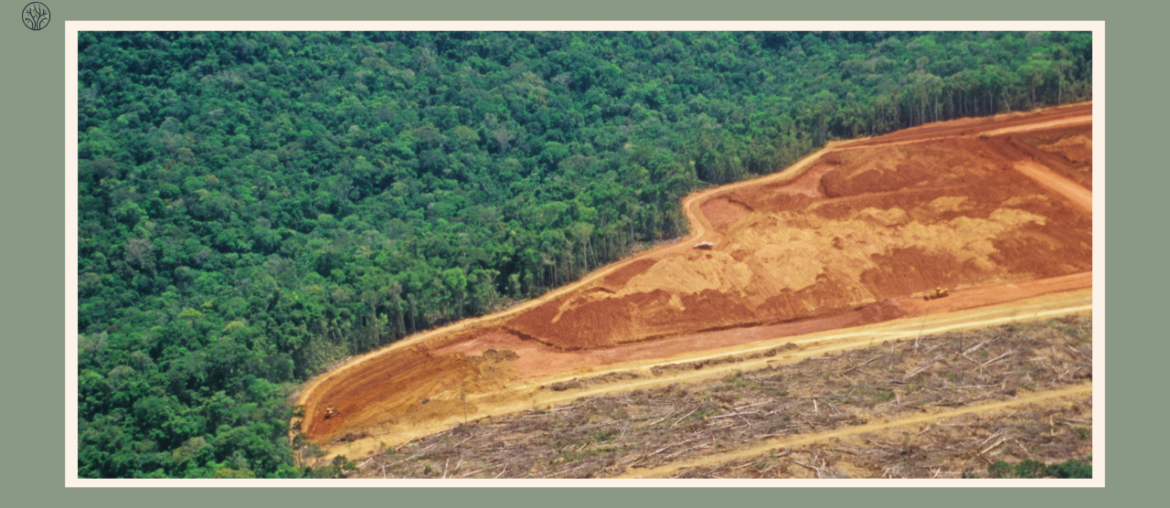The Amazon rainforest is the largest and most biodiverse tropical forest in the world. However, this vital ecosystem is under threat from deforestation due to human activities. As a result, what used to be the lungs of the world, is now emitting more CO2 than it absorbs.
When Did The Deforestation Of The Amazon Rainforest Start?
A brief history of The Amazon rainforest
The Amazon rainforest is a vast tropical forest that covers about 6 million square kilometers of land in South America. It spans 9 countries: Brazil, Bolivia, Peru, Ecuador, Colombia, Venezuela, Guyana, Suriname, and French Guiana. The Amazon basin is home to about 10% of all known species on Earth, including thousands of plants, animals, insects, and fungi. It also plays a crucial role in regulating the global climate, as it absorbs and stores large amounts of CO2.

The Amazon rainforest has been around for at least 55 million years, but it has not always been as large and diverse as it is today. In fact, during the last ice age, the Amazon was much smaller and drier than it is now. As the climate warmed up and became wetter, the forest expanded and diversified, reaching its peak about 2,000 years ago.
However, since then, human activities have started to reduce the size and quality of the Amazon rainforest. The first signs of human impact were when indigenous peoples cleared some areas of land for agriculture and hunting. However, these activities were relatively small-scale and localized and did not cause significant damage to the forest.
The beginning of the deforestation of the Amazon rainforest
The major deforestation of the Amazon rainforest began in the 20th century, especially after World War II. After the war, governments and corporations started to exploit the natural resources of the region for economic development. Roads, dams, mines, and other projects were built, causing large-scale clearing of trees and destruction of habitats. According to one estimate, between 1970 and 2018, about 20% of the original forest area was lost to deforestation.
The rate of deforestation in the Amazon has varied over time, depending on political, economic, social, and environmental factors. Between the 1970s and 1980s, when Brazil promoted colonization and development of the region; and the early 2000s, when global demand for soybeans and beef rose sharply. Other periods saw a decrease in deforestation, such as the late 2000s, when Brazil implemented policies and programs to monitor and control illegal logging and land clearing; or the mid-2010s, when commodity prices fell and economic growth slowed down.
However, since 2019, deforestation in the Amazon has been rising again at an alarming rate. This is partly due to the policies of Brazil’s president Jair Bolsonaro, who has weakened environmental enforcement agencies, encouraged mining and farming in protected areas, and dismissed international criticism over his handling of the forest crisis. Other factors that contribute to deforestation include corruption, land conflicts, fires, climate change, and COVID-19.
What Are The Causes Of Deforestation In The Amazon Rainforest?
Deforestation in the Amazon rainforest has been occurring since the colonial era, but it accelerated significantly in the second half of the 20th century, especially after the construction of roads and highways that opened up access to previously remote areas.
According to the FAO, between 1990 and 2020, 15% of the world’s forest lost was in the Amazon. The main drivers of deforestation in the Amazon rainforest are:
1. Agriculture
One of the most significant causes of deforestation in the Amazon is agriculture, especially cattle ranching and soybean farming. These two activities account for about 80% of the forest loss in the region.
Brazil is the world’s largest producer and exporter of both beef and soybeans, and the Amazon is a key area for these farms. To meet the growing demand for these products, farmers often clear large areas of forest to create new farmland. This not only destroys the natural habitat of many species, but also increases soil erosion, and greenhouse gas emissions.
2. Logging
Another major cause of deforestation in the Amazon is logging. The Amazon has some of the most valuable hardwoods in the world, such as mahogany, cedar, and rosewood. These woods are used for making furniture, flooring, paper, and other items.
Logging is a profitable business, but it also has a high environmental cost. Logging operations often use heavy machinery and roads that damage the forest floor and fragment the forest canopy. This makes the forest more vulnerable to fires, pests, and diseases. Moreover, logging often leads to illegal or unsustainable practices, such as overharvesting, poaching, and land grabbing.
3. Mining
The Amazon is also rich in mineral resources, such as gold, iron ore, copper, and bauxite. Mining is an important economic activity in the region, but it also poses a serious threat to the forest and its people.
Mining activities often involve clearing large areas of forest to access the mineral deposits. This results in habitat loss, soil degradation, and water contamination. Mining also affects the health and livelihoods of the local communities, especially the indigenous peoples who depend on the forest for their survival. Mining often brings conflicts, violence, and human rights violations to these communities.
4. Human Activity
The Amazon is home to about 35 million people, including more than 400 indigenous and traditional communities. These people have a deep connection with the forest and its resources. However, they also face increasing pressure from human activity that threatens their way of life. Some of these activities include:
- Infrastructure development: The construction of roads, dams, pipelines, and other infrastructure projects often requires clearing large areas of forest. These projects also facilitate access to previously remote areas of the forest, opening them up for further exploitation.
- Urbanization: The expansion of urban areas in and around the Amazon is also contributing to deforestation. Urbanization increases the demand for land, energy, water, and food. It also generates more waste and pollution that affect the forest ecosystem.
- Climate change: The Amazon plays a crucial role in mitigating climate change by absorbing carbon dioxide from the atmosphere. However, climate change also affects the Amazon by altering its temperature, rainfall patterns, and fire regimes. These changes can reduce the resilience of the forest and increase its vulnerability to deforestation.
The Effect of Deforestation In The Amazon Rainforest
Deforestation in the Amazon rainforest has serious and far-reaching consequences for the environment, biodiversity, climate, and human well-being. Some of the main effects of deforestation in the Amazon rainforest are:
Loss of biodiversity

The Amazon rainforest is one of the most biodiverse places on Earth, hosting more than 40,000 species of plants, 3,000 species of fish, 1,300 species of birds, 430 species of mammals, 380 species of reptiles, and 400 species of amphibians. Many of these species are unique to the Amazon region, meaning they are found nowhere else in the world.
Deforestation threatens the survival of these species by destroying their habitats, reducing their populations, isolating their gene pools, increasing their exposure to diseases and predators, and disrupting their ecological interactions.
According to a study by the World Wildlife Fund (WWF), more than 10% of the Amazon’s wildlife could be lost by 2030 if deforestation continues at current rates. Some of the animals affected by deforestation in the Amazon rainforest include jaguars, macaws, and many more.
Carbon emissions
The Amazon rainforest absorbs and stores about 100 billion tonnes of carbon. Deforestation releases this carbon into the atmosphere as CO2 or methane (CH4). These are both greenhouse gases that trap heat in the atmosphere and contribute to global warming.
According to a study by the Woods Hole Research Center (WHRC), deforestation in the Brazilian Amazon alone accounted for about 1.5% of global CO2 emissions from 2001 to 2015.
Climate change
The Amazon rainforest influences the global climate not only by absorbing and emitting greenhouse gases but also by regulating rainfall patterns and temperatures.
It acts as a giant air conditioner that cools the Earth by evaporating water from its leaves and transpiring it into clouds. It also acts as a conveyor belt that transports moisture from the Atlantic Ocean to the Andes Mountains and beyond. Deforestation disrupts these processes by reducing evapotranspiration thus reducing cloud formation and rainfall, and as a result, increasing surface temperature and drought.
Social and economic impacts
The Amazon rainforest provides a range of ecosystem services that benefit millions of people, both locally and globally. These services include food, water, medicine, fiber, fuel, recreation, tourism, cultural identity, and spiritual value.
Deforestation jeopardizes these services by degrading the quality and quantity of natural resources, increasing the risk of natural disasters, reducing the resilience of local communities, and undermining their rights and livelihoods. Deforestation also affects the global economy by reducing the potential for trade, investment, innovation, and development.
How Can We Stop Deforestation In The Amazon Rainforest
Deforestation in the Amazon has severe consequences for biodiversity, climate change, and human rights. It leads to habitat loss and fragmentation for millions of species, many of which are already threatened with extinction. Therefore, it is urgent to stop deforestation in the Amazon and protect its forests for the benefit of all life on Earth.
1. Support indigenous peoples and local communities

Indigenous peoples and local communities are the guardians of the Amazon. They have lived in harmony with nature for centuries, and they have a deep knowledge of the forest and its resources. They also have legal rights to their lands and territories, which cover about 25% of the Amazon basin.
However, these rights are often violated or ignored by governments and corporations who seek to exploit the forest for their own interests. Indigenous peoples and local communities face threats such as land grabbing, violence, intimidation, eviction, and murder. They also suffer from discrimination, poverty, and lack of access to health care and education.
2. Promote sustainable land use and management
This involves encouraging and supporting alternative land use practices that are compatible with forest conservation and restoration, such as organic farming, and ecotourism. This also involves improving land security and land use planning, as well as providing incentives and subsidies for forest-friendly activities and disincentives and penalties for forest-destructive activities.
3. Strengthen environmental governance
One of the most effective ways to reduce deforestation in the Amazon is for the government to enforce laws that govern it. For example, the Brazilian government can create laws and regulations that prioritize sustainable agricultural activities and forestry practices. The government can also implement measures that penalize individuals and companies that engage in illegal deforestation. This way, there will be a clear message to people that deforestation is unacceptable and punishable.
4. Raise awareness and education
Another solution to combat deforestation in the Amazon is to raise awareness and education among the public about the importance of forests and their benefits for people and the planet. By increasing people’s knowledge and understanding of the causes and consequences of deforestation, as well as the potential solutions, it is possible to foster a sense of responsibility towards forests. Education can also empower people to take action in their own lives, such as by reducing their consumption of products that contribute to deforestation, such as beef, soy, palm oil, and wood products.
Education can also target specific groups that are directly involved in or affected by deforestation, such as farmers, loggers, miners, ranchers, consumers, and investors. By providing them with information, skills, tools, and alternatives, education can help them adopt more sustainable practices that are compatible with forest conservation. For example, farmers can learn about techniques that integrate trees with crops and livestock, which can improve soil quality, increase crop yields, enhance biodiversity, and reduce deforestation pressure.
5. Support research and innovation
Technology is constantly evolving at an ever-increasing pace. By taking advantage of our technological advancement, we can find better ways to protect our valuable assets. The potential of using AI and machine learning to protect the forest is promising, but it still has a long way to go before it becomes practical and widely used. That is why we should invest in and support scientific research and technological innovation that can enhance our understanding and monitoring of the Amazon rainforest, as well as the development of best practices and tools for forest conservation and restoration.
Tenere’s Effort In Fighting Off Deforestation
The Amazon rainforest is more than just a collection of trees and plants. It is a living, breathing, and vital part of our planet that supports millions of species and billions of people. However, the Amazon rainforest is under threat from deforestation, which is destroying its biodiversity, ecosystem services, and climate benefits.
We cannot afford to lose the Amazon rainforest. It is our responsibility to protect it and restore it for the sake of our future and the future of all life on Earth. There are many ways we can help, such as reducing our consumption of products that contribute to deforestation, raising awareness and educating others about the importance and value of the Amazon rainforest, and advocating for policies and actions that protect the forest and its people.
One of the ways you can help is by shopping online through Tenere, a platform that helps you save money and the planet at the same time. We donate part of our commission to tree-planting projects around the world that help restore the forest and reverse the effects of deforestation. By shopping through Tenere, you are not only getting great deals on your favorite products but also planting trees where they are needed.
The Amazon rainforest is not only a natural wonder but also a global treasure. It is up to us to ensure that it remains so for generations to come. Join us in our mission to save the Amazon rainforest and make a difference today!









